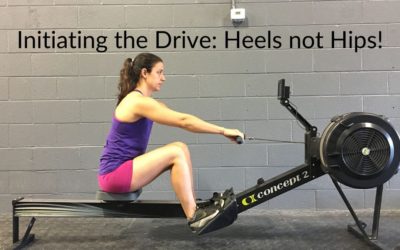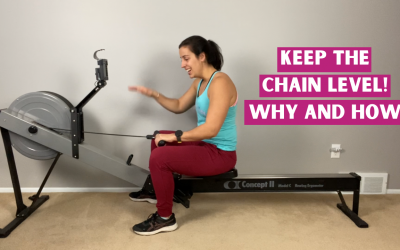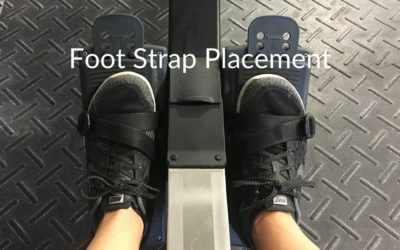4 Things You Should be Doing in Your Rowing Warmups
Warming up for your rowing workouts is important. Not just for your rowing, but also for your body! Warming up helps your body get ready for what it’s about to do. There are four main things that I recommend you do to warm up for a rowing workout. Let’s get right to it!
Active Stretches
Before you even get on your rowing machine, I highly recommend you incorporate some active stretches. What are active stretches? What do they look like? There’s really a whole host of options. They can look like whatever feels good and works for you.
Active stretches are different than passive stretches. Active stretches are things like leg swings. They’re movements where you’re able to continually move in and out of the stretch. Static stretching is where you hold the stretch for a longer time (>10sec). You want to save those static stretches for after you’re done with your workout.
You can always turn a static stretch that you really like into an active stretch by simply just moving in and out of it. Thye key is to only hold the stretch for a second or two, then come out of it. I suggest pulsing in and out of a stretch like this for about 20 seconds. Any stretch that is a favorite of yours, can be turned into an active stretch by moving in and out of it and not staying static for longer than one to two seconds.
Drills
Now it’s time to get on your rowing machine and start with one to two minutes of drills. This could be a different drill each day. There’s a whole host of drills to choose from! You can do the pick drill, reverse pick drill, cut the cake, pause drill, etc. Any of those drills help get your rowing stroke ready to go. You have some time to practice hitting those body positions and loosening you up before you get into the next step of your warmup.
Moderate Rowing
And that’s some moderate rowing. This rowing doesn’t need to be quick or too hard. Choose a nice stroke rate, somewhere between an 18spm to 22spm depending on where you like to sit. You want to continue to warm up the muscles with moderate rowing for at least three to four minutes minimum. After this time is when you can incorporate the last thing, which is…
Power 10s
Power tens! A power 10 is when you push harder for 10 hard strokes. Your power 10s can be at a certain stroke rate, or they can just be as hard as you can. That will depend on the workout that you’re doing.
The length of your warmup is going to depend on what you’re doing in your rowing workout. If it’s a longer steady state piece, you could work your warmup into your first piece. You would start your workout with the drill and the moderate rowing would go straight into the longer steady state piece without a break. That’s perfectly fine to do!
If you’re doing some intervals, it’s important to put in some power 10s into your warmup before you start. If those intervals are longer, with not too much of a higher stroke rate (maybe 24-26som), you may only need one or two power 10s. I recommend taking about 90 seconds in between power 10s to paddle it out.
If you’re doing some short and fast intervals where you’re getting that stroke rate up pretty high, I recommend getting a couple more power tens in there. You might want to do three or four to really get yourself warmed up. When you put 90 seconds in between each of those power tens, you might be rowing for at least 10 minutes, maybe closer to 15 minutes.
The shorter the pieces, the harder you’re going to be rowing, the longer your warmup should be. It can be anywhere from a couple minutes for a longer steady state, all the way up to 15 or even 20 minutes before a sprint workout.
Recap
First, do some active stretches. I love doing them! Do what feels good for you and what’s going to loosen up what feels tight for you that day. Then, one to two minutes of drills. It doesn’t need to be long, but it’s important to get your rowing started right. Three, get some moderate rowing in. Lastly, do your power tens! Do as many power 10s as you need to get warm for the workout that you’re doing.
If you liked the tips in this post, feel free to subscribe to my newsletter!
Don’t get me wrong, there’s lot of different ways to warm up for your indoor rowing workouts. This is one way that has worked well for me. It’s simple, and get’s the job done!
Initiating the Drive: Heels not Hips!
A common technique fault that I see on the rowing machine is when athletes are initiating the drive with their hips and not their heels. Watch the video above to see what I mean. If you are initiating the drive with your hips, you will lean back and this puts you in...
Keeping the Chain Level
You may have heard that in your rowing stroke, it's important to keep that chain level throughout your entire rowing stroke. Here, I'm going to teach you why it's important and why keeping that chain level can affect other parts of your stroke and make you a better...
Foot Strap Placement
The placement of the foot straps on your shoes can be just as important as anything else in your rowing stroke. In fact, having proper foot placement could fix any technical issues you may not be aware of. When you change where your foot sits, it affects the angle of...



